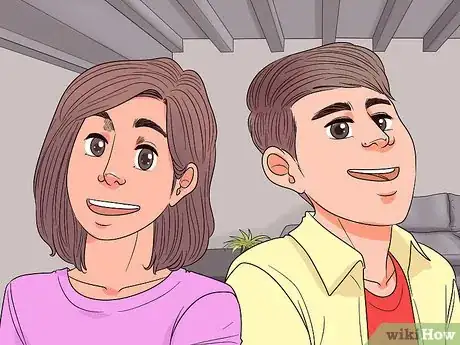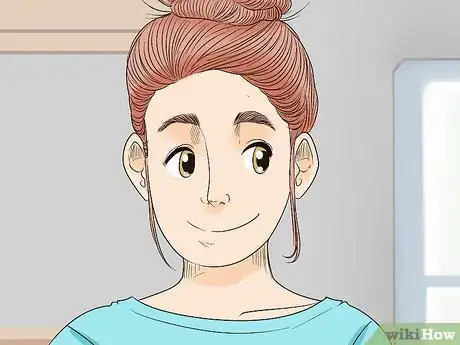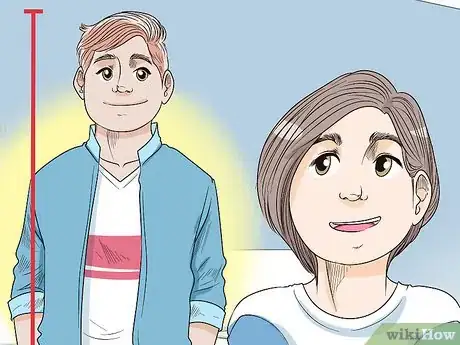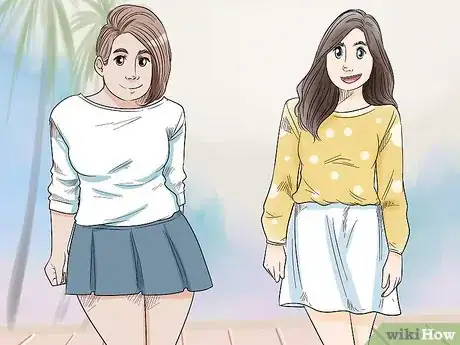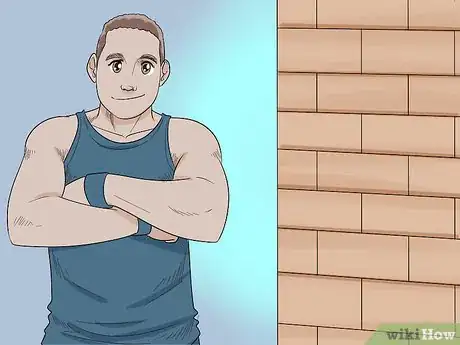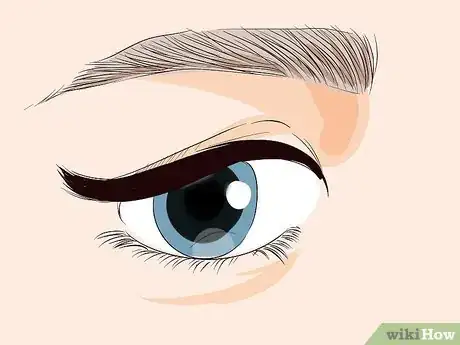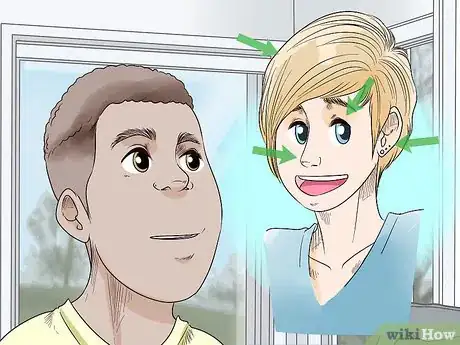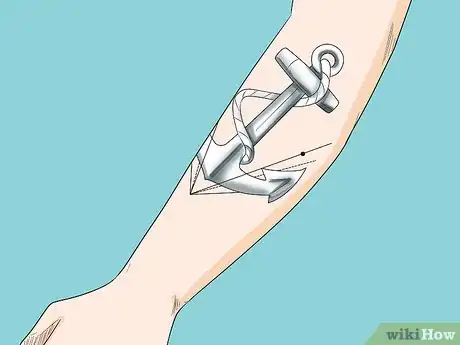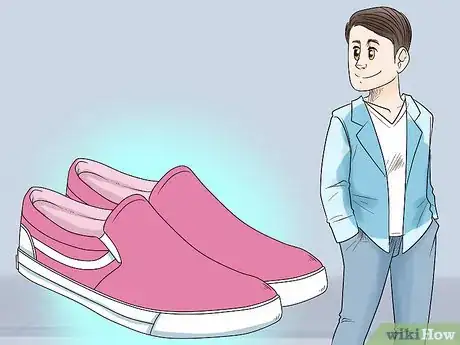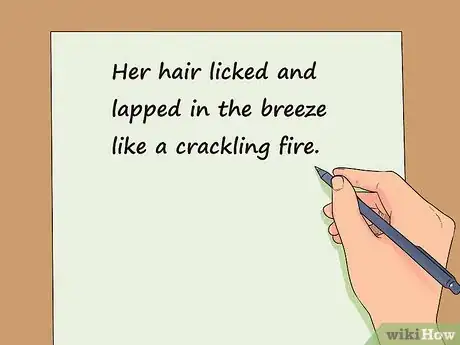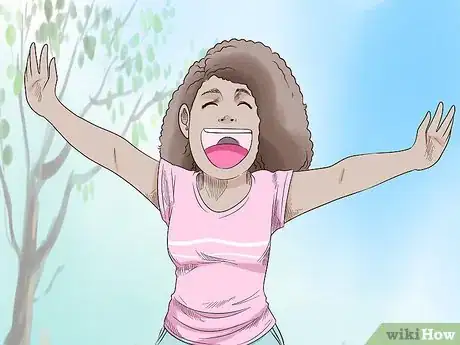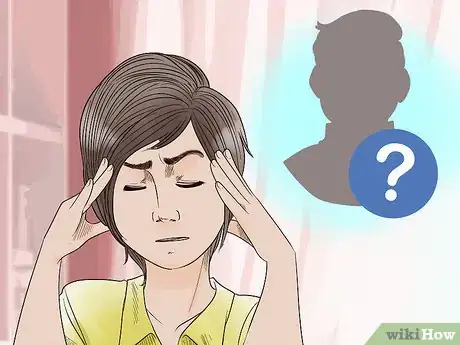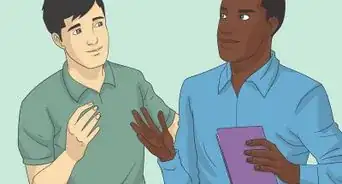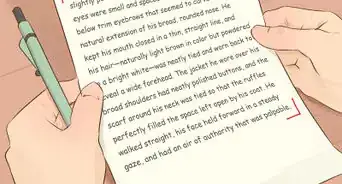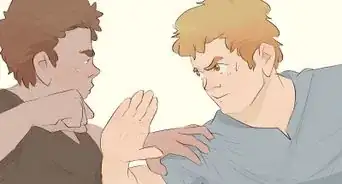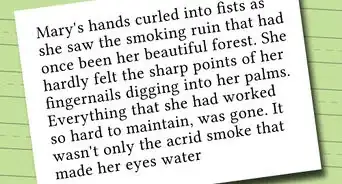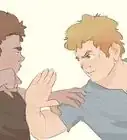wikiHow is a “wiki,” similar to Wikipedia, which means that many of our articles are co-written by multiple authors. To create this article, 52 people, some anonymous, worked to edit and improve it over time.
This article has been viewed 1,133,572 times.
Learn more...
Describing someone’s physical appearance sounds easy, until you actually try to do it. Whether you want to describe someone you just met to a friend or alert the police about a crime suspect, it’s important to cover key physical details and unique characteristics systematically. If you’re trying to flesh out a character in the story you’re writing, however, it’s equally important to leave details to the imagination as it is to provide them directly to the reader.
Steps
Key Characteristics
-
1Identify them as male or female when appropriate. In many cases this will be immediately obvious, and will likely be the first thing you’ll take note of. However, not everyone conforms to these categories, and it’s typically best not to make assumptions unless necessary.[1]
- For instance, if you’re trying to describe a suspect to the police, you may have to say something like, “They looked like a man to me, but I can’t be certain.”
- In other cases, you may be able to simply skip ahead to other descriptive elements.
-
2Take note of their skin color, and guess a race or ethnicity if needed. Here again, there’s a difference between describing someone for the police and doing so for other reasons. In the first case, you may need to make assumptions—like, “he looked Irish” or, “she was Korean, I think”—that may be insensitive or offensive in other cases.[2]
- You can stick to just describing the color of their skin, using terms like “olive,” “pale,” “dark brown,” and so on. Leave it to others to make assumptions if they wish.
Advertisement -
3Estimate their age range within 5 or 10 year increments. In many cases, you’ll be able to pick someone out as “around 25” or “probably 60.” Consider providing an age range that is as narrow as you are comfortable giving—this will make it easier for others to visualize the person you’re describing.[3]
- For instance, identifying someone as looking 30-35 instead of 30-40 gives a clearer picture to others.
- This is especially important with younger people—a 10 year old looks very different from a 20 year old, after all!
-
4Give their height either descriptively or by estimating. If you only get a quick glimpse of someone, the best you’ll probably be able to do is put them in a general height category like “very tall, “tall,” “average,” “short,” or “very short.” These vague terms become slightly more useful when the person can be categorized as male or female, or as a child.[4]
- If you’re able to give a more specific estimate of their actual height, try to do so in 2 inch or 5 centimeter increments—for instance, “she’s between 5’4” and 5’6”,” or, “he was 180-185 cm tall.”
-
5Describe their weight with terms like “thin,” “average,” and “large build.” It’s usually much more difficult to estimate weight accurately than it is to estimate someone’s height. Therefore, stick to giving fairly vague categorizations of a person’s overall “build”—saying things like, “she was very thin” or, “he has a very large build.”[5]
- Describing a person’s size and/or weight can make you seem insensitive, so unless you must do it as accurately as possible (e.g., describing a missing person), stick to describing their “build”—“thin build,” “average build,” etc.[6]
- Some descriptive terms can be more insensitive in some variations of a language than others. For instance, calling a woman “plump” is somewhat more polite in British English than American English, where it’s better to stick with “large” or perhaps “curvy.”
- If you’re estimating a specific weight, try to do it within 20 pound or 10 kilogram increments if possible.
-
6Mention their overall appearance as tactfully as possible. Beauty is in the eye of the beholder, after all, so your idea of a “gorgeous” person might not line up with someone else’s. Give your opinion, but do with tact—for instance:[7]
- Call a person you find unattractive “ordinary” or “plain,” not “ugly.”
- Use “scruffy” or “unkempt” instead of “messy.”
- Use “attractive” to denote good-looking, instead of “beautiful,” “gorgeous,” or possibly even “handsome.”
- “Flabby” isn’t ideal, but it may be the best way to describe someone who is the opposite of “fit,” “toned,” or “well-built.”
Facial Features and Unique Details
-
1Note their hair color, length, style, and appearance. Use general terms that are fairly easy for most people to visualize. For example:[8]
- Color: brown, black, blonde, sandy, red, gray
- Length: shaved, short, medium, long, shoulder-length, etc.
- Style: straight, curly, wavy, afro, ponytail, dreadlocks, bun, mohawk, etc.
- Appearance: messy, thinning, frizzy, glossy, clean, slicked, and so on.
-
2Mention their eye color, eye shape, eyebrows, and glasses. As with hair characteristics, stick to simple terms that most people can picture in their head. For instance:[9]
- Color: black, brown, grey, blue, green, hazel
- Shape: wide, narrow, bulging, deep set, squinting, etc.
- Eyebrows: color plus qualities like bushy, thin, connected, and so on
- Glasses: note the color, shape, material, thickness, and any tinting
-
3Take note of other facial features, like their nose, ears, and lips. For ears, “large,” “average,” or “small” will usually do, while for lips, “thin,” “average,” and “plump” will probably work. A person’s nose might be “short,” “long,” “wide,” “thin,” “pointy,” “rounded,” “hooked,” “bent,” and so on. Their face overall might be described as “long,” “round,” or “flat.”[10]
- If you're filing a police report, you may want to mention if they have “rosy cheeks,” “bags under their eyes,” or a “double chin.” Otherwise, be polite and skip these details!
-
4Identify distinguishing features like scars and tattoos. These are especially important if you are describing someone to the authorities—for instance a missing person or a crime suspect. Check for permanent features like these and describe them in detail.[11]
- Instead of saying, “he has a tattoo on his arm,” say, “he has a black and red, heart-shaped tattoo with “Mother” in cursive on his right biceps.”
- If you’re going for a more general description, calling someone “tattooed” will probably get the point across that they have widespread body art.[12]
-
5Look for unique characteristics like their posture and nervous tics. Do they have a “slouchy” posture or a “hunchback?” Do they tilt their head to one side, or blink a lot while they talk? Do they bounce their knee up and down incessantly while seated? Small details like these can make it easier to visualize the person you’re describing.[13]
- Some of these characteristics bridge the gap between physical appearance and personality traits, but they can help provide a fuller picture of the person you’re describing physically.[14]
-
6Describe their clothing, or at least their overall “look” or style. If you’re describing someone to the authorities, try to be as detailed as possible about every item of clothing the person has on—pants, shirt, jacket, shoes, hat, etc. For a more general description of a person, indicate their overall style or fashion sense.[15]
- In British English (more so than American English), calling someone “smart” indicates that they are well-dressed and well-groomed.[16]
Creative Descriptions
-
1Use figurative language alongside descriptive details. Rely on language that evokes the person’s physical appearance as much as you do on strictly descriptive phrases. This is the creative part of creative writing![17]
- Instead of writing, “she had long, red hair,” you might write, “her hair licked and lapped in the breeze like a crackling fire.”
- Stating that a person “stood like a mighty oak” conveys quite a bit about their physical appearance and the way they carried themselves in only a few words.
-
2Describe the person in a way that matches the tone of the writing. If, for instance, you’re writing in a humorous tone, utilize humorous language to describe the person. If, however, the scene is tense and dramatic, skip the silly metaphors in your descriptions.[18]
- Consider the difference, for instance, between describing “knife-blade slits for eyes” and “squinty eyes like Popeye’s first cousin.”
-
3Mention actions that reveal physical characteristics. By using the things that a character does to infer details about their appearance, you can cut back on direct descriptions. Combine this with figurative language to help a reader visualize the individual.[19]
- For example: “he barreled through the crowd of people like a wave through a sand castle built at low tide.”
- Or: “she worked her way through the crowd unnoticed, like water filtering through the cracks in a sidewalk.”
-
4Leave something to the reader’s imagination. Don’t feel the need to describe characters to the smallest detail! Create a loose outline of some key physical characteristics, and let the reader fill in the blanks with their own imagination.[20]
- The less vital a physical attribute is to a character, the less vital it is for you to mention it. If it doesn’t really matter if your character is tall or short, or has brown or black hair, leave it up to the reader to decide!
Community Q&A
-
QuestionHow to write describing of a person?
 CMOsborneCommunity AnswerIf you're doing creative writing, use figurative language alongside straight descriptive terms. If you're writing something like a police report, be as factual and detailed as possible.
CMOsborneCommunity AnswerIf you're doing creative writing, use figurative language alongside straight descriptive terms. If you're writing something like a police report, be as factual and detailed as possible. -
QuestionHow do I describe characters in my book?
 CMOsborneCommunity AnswerProvide only as much detail about their physical appearance as you feel is necessary to define them as a character. Leave the rest up to the reader's imagination!
CMOsborneCommunity AnswerProvide only as much detail about their physical appearance as you feel is necessary to define them as a character. Leave the rest up to the reader's imagination! -
QuestionWould it be weird to be caught staring at someone?
 Community AnswerThey might find it weird, but just pretend you're daydreaming or oblivious. People tend to overlook situations, and some people may question it, others not. I'd say just be a bit weird in the streets if you plan to do this, and it will go down well.
Community AnswerThey might find it weird, but just pretend you're daydreaming or oblivious. People tend to overlook situations, and some people may question it, others not. I'd say just be a bit weird in the streets if you plan to do this, and it will go down well.
References
- ↑ https://www.police.qld.gov.au/programs/cscp/Documents/PersonDescriptionFactSheet.pdf
- ↑ https://www.police.qld.gov.au/programs/cscp/Documents/PersonDescriptionFactSheet.pdf
- ↑ https://www.police.qld.gov.au/programs/cscp/Documents/PersonDescriptionFactSheet.pdf
- ↑ https://www.police.qld.gov.au/programs/cscp/Documents/PersonDescriptionFactSheet.pdf
- ↑ https://www.police.qld.gov.au/programs/cscp/Documents/PersonDescriptionFactSheet.pdf
- ↑ https://www.esolcourses.com/content/exercises/grammar/adjectives/appearance/vocab1.html
- ↑ https://www.esolcourses.com/content/exercises/grammar/adjectives/appearance/vocab1.html
- ↑ https://www.police.qld.gov.au/programs/cscp/Documents/PersonDescriptionFactSheet.pdf
- ↑ https://www.police.qld.gov.au/programs/cscp/Documents/PersonDescriptionFactSheet.pdf
- ↑ https://www.police.qld.gov.au/programs/cscp/Documents/PersonDescriptionFactSheet.pdf
- ↑ https://www.police.qld.gov.au/programs/cscp/Documents/PersonDescriptionFactSheet.pdf
- ↑ https://www.esolcourses.com/content/exercises/grammar/adjectives/appearance/vocab1.html
- ↑ https://www.police.qld.gov.au/programs/cscp/Documents/PersonDescriptionFactSheet.pdf
- ↑ https://www.carvezine.com/from-the-editor/10-tips-for-writing-physical-descriptions-of-your-characters.html
- ↑ https://www.police.qld.gov.au/programs/cscp/Documents/PersonDescriptionFactSheet.pdf
- ↑ https://www.esolcourses.com/content/exercises/grammar/adjectives/appearance/vocab1.html
- ↑ https://www.carvezine.com/from-the-editor/10-tips-for-writing-physical-descriptions-of-your-characters.html
- ↑ https://www.carvezine.com/from-the-editor/10-tips-for-writing-physical-descriptions-of-your-characters.html
- ↑ https://www.carvezine.com/from-the-editor/10-tips-for-writing-physical-descriptions-of-your-characters.html
- ↑ https://www.carvezine.com/from-the-editor/10-tips-for-writing-physical-descriptions-of-your-characters.html
- ↑ https://www.psychologytoday.com/us/blog/the-truth-about-exercise-addiction/201706/what-really-happens-when-someone-stares-you
About This Article
To describe a person's physical appearance, start with general information like hair color and length, approximate height and weight, gender, and age range. Then, get more specific by describing features like the eyes, nose, and mouth, and don't forget to include distinctive characteristics like visible tattoos. If you can remember anything very specific about their clothing, shoes, or movements, include those descriptions, too! For tips on being as tactful as possible with your descriptions, read on!
